
East Java falls well under the Indonesia tourist radar. A few intrepid travelers stop in sleepy Banyuwangi to catch the ferry to Bali. Other adventurers go to check out the sulfur miners plying the world’s hardest trade in the beautiful nearby Ijen Crater.
But few have the time nor fortitude to navigate the swollen rivers, 4000 millimeters of annual rainfall, and jungle roads that lead into the little-known Meru Betiri National Park. It’s an arduous journey to get here, but one well worth it.

As it is here, along southeastern Java’s most remote stretch of coastline, that you’ll find Sukamade Beach, a tucked away strip of sand and sea, where large groups of endangered turtle species come to nest and lay their eggs each year. It’s a captivating and unique event that ought to be on any nature lover’s to-do list.
I’m not predisposed to taking the path of most resistance. But my wife and I do like getting off the beaten track, and a journey to Sukamade seemed to tick all the right boxes. A friend of ours in Banyuwangi had put us in touch with Sri, a driver who was the only female amongst the handful of jeep drivers tough enough to handle the four-wheel drive conditions that are part of any Sukamade adventure.
We set off from Banyuwangi armed with several flashlights, camera equipment, Goretex boots, some air mattresses, and plenty of food (as the ranger station where guests can stay in the park has only basic meals and bunks). Perhaps most importantly, we were also equipped with several large wooden planks, which Sri noted she used on most trips for getting unstuck from mud holes and worse.
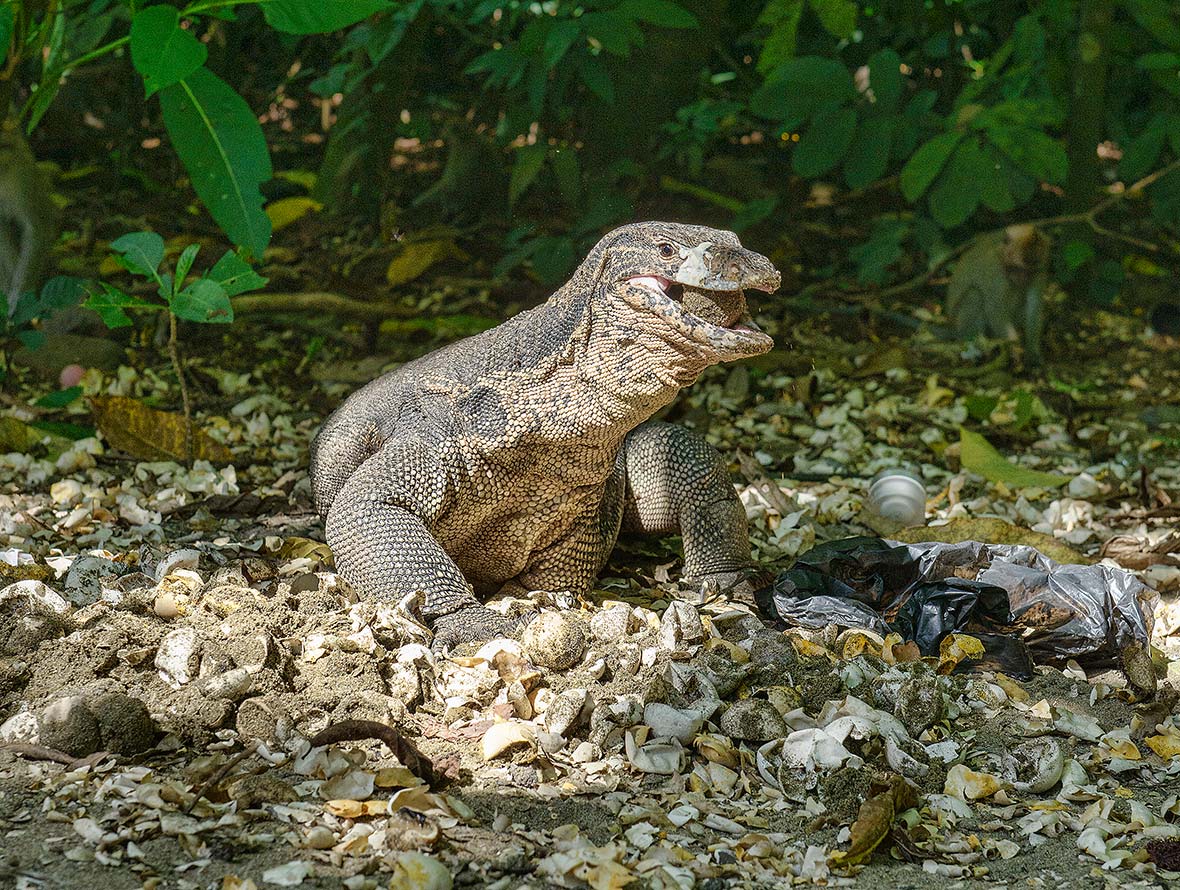

Between December and March, the rivers encountered along the route into Meru Betiri can be impassable, although judging by Sri’s ability to ford the first two we came to, as well as her deftly handling steep rutted tracks while simultaneously chain smoking and giving a running diatribe on the turtle sanctuary, we were in good hands.
We passed through verdant rice fields and coconut plantations, and a few small hamlets that were slices of languid rural Javanese life, eventually climbing up and over jungle-clad headlands and through a final river crossing that led down to Teluk Hijau, a turquoise bay fronting a pristine white sand beach. This beach, neighboring Sukamade, and some 580 square kilometers of protected forest make up Meru Betiri National Park, known to be the last habitat for the Javan tiger, as well as leopards, leopard cats, flying squirrels, and wild boar amongst other mammals.
Sri said she’d seen tiger prints in the forest here, but never seen a big cat herself, and that she figured there weren’t more than just a few left in the wild at most. But we weren’t here to search for big cats, but rather for the real attraction of the park, the arrival of hundreds of endangered hawksbill, leatherback, olive ridley, and green sea turtles, all coming back to their birthplace to continue their lineage.
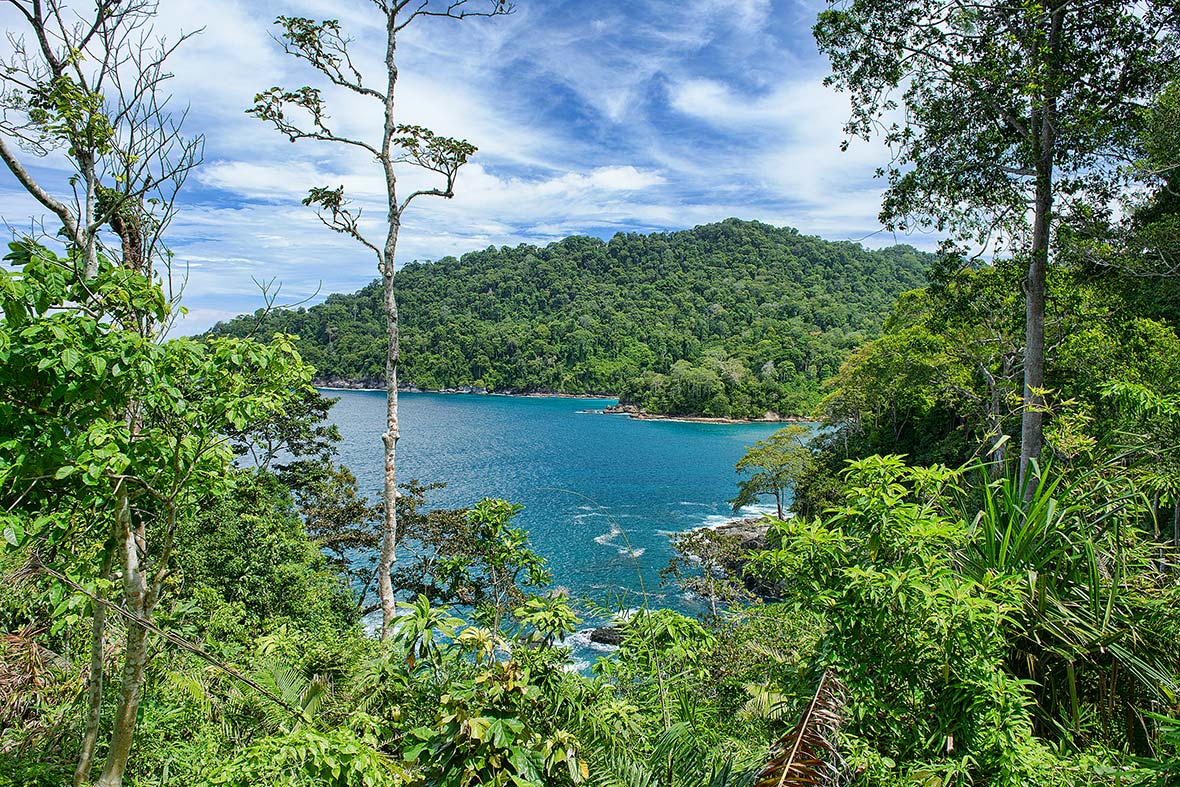
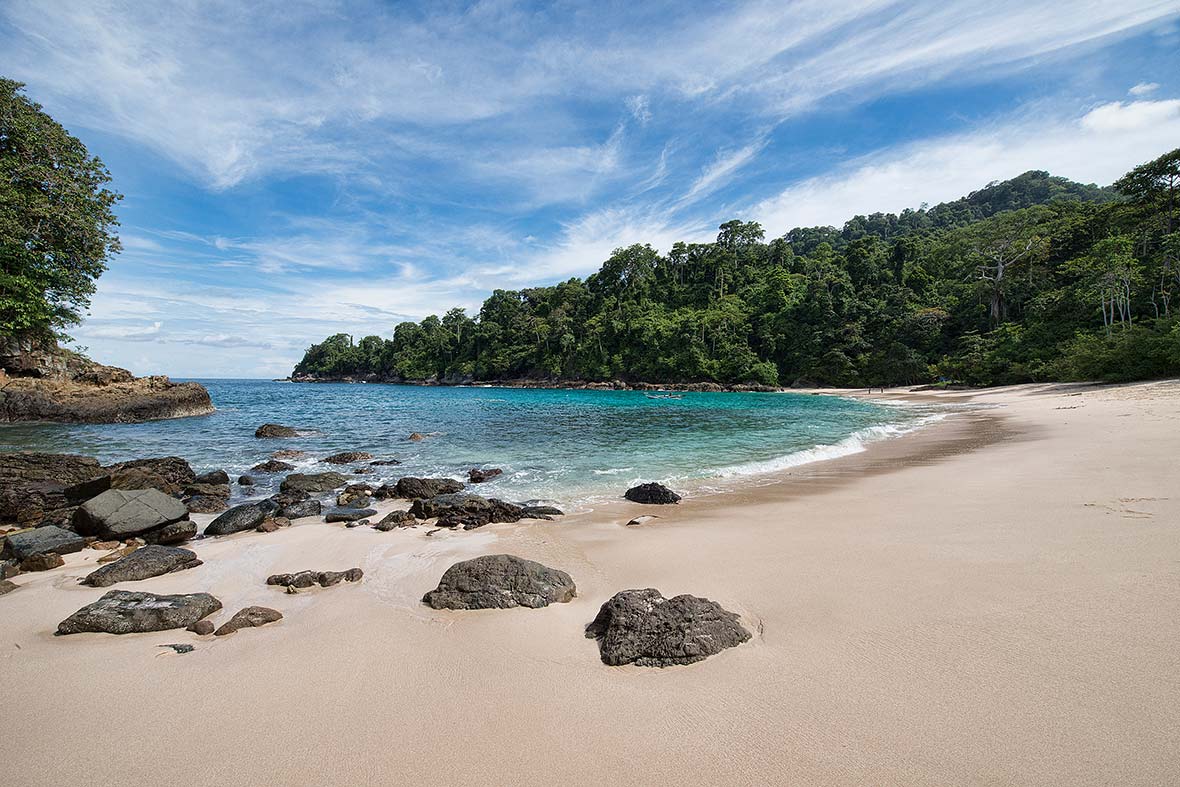

The huge marine turtles spend years migrating across the world’s oceans, and then use the earth’s magnetic field to navigate back to the beach they were born on to mate and lay their eggs. Seabirds, monitor lizards, and even stray dogs are all predators of the turtles’ newly hatched eggs, and even once in the water, the hatchlings fall prey to birds, sharks, and other marine life. In the end, almost 90% of all the hatchlings don’t reach adulthood, meaning that out of the 110 eggs that an average olive ridley turtle lays in the sand, the chances of a full life at sea are slim.
At Sukamade, rangers work 24-hour shifts to ensure that poachers, predators, and any other threats to the turtles are kept at bay. We’re assigned a ranger guide who ensures we stay a safe distance from the turtles, don’t take flash photos, and helps a volunteer team to do the delicate daily work of taking freshly laid eggs from the sand to a nearby hatchery, where the young turtles can incubate for 6-8 weeks before they are released from the same beach where they were born.
Normally, hatchlings would use a temporary tooth that is in the egg known as a carbuncle to puncture the shell when ready and then dig their way out of the sand, but at Sukamade, this would result in most of the eggs probably being devoured, thus the need for human help.
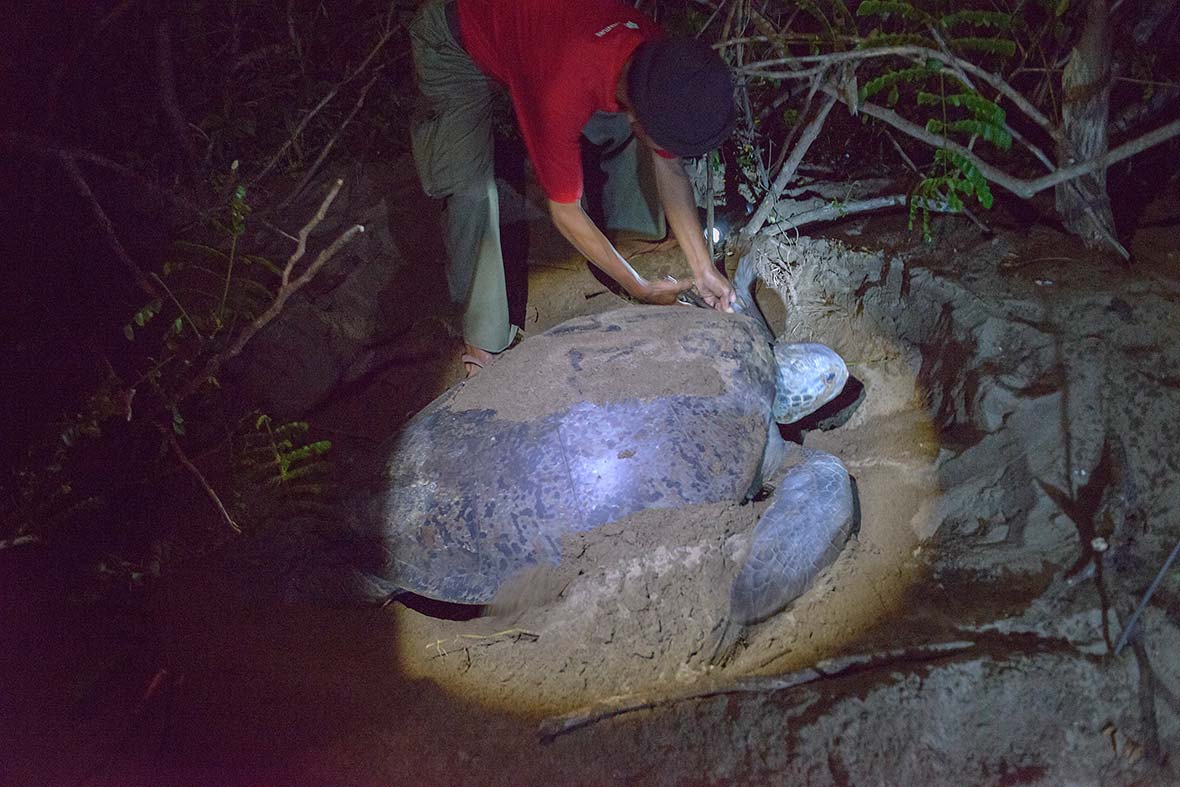
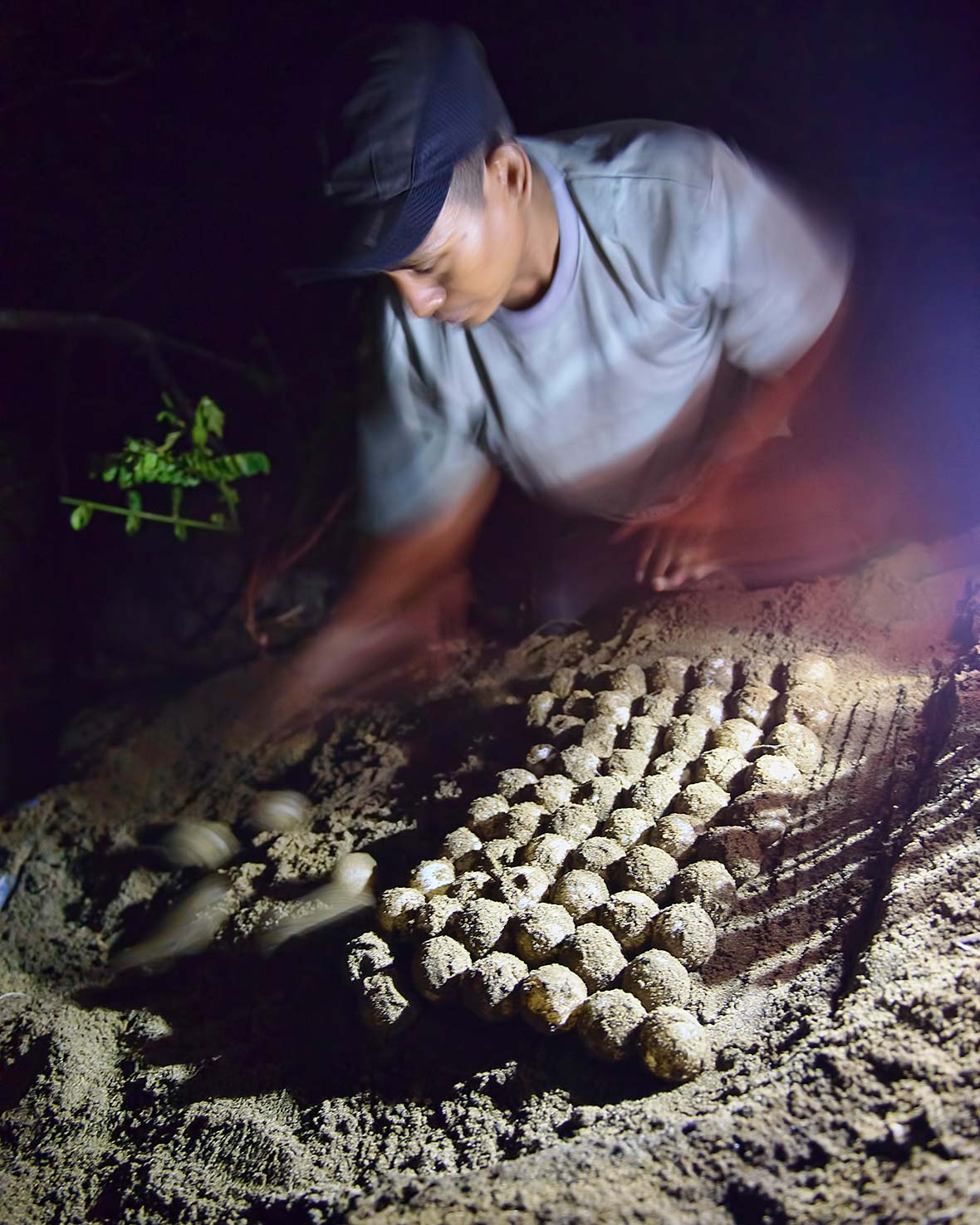

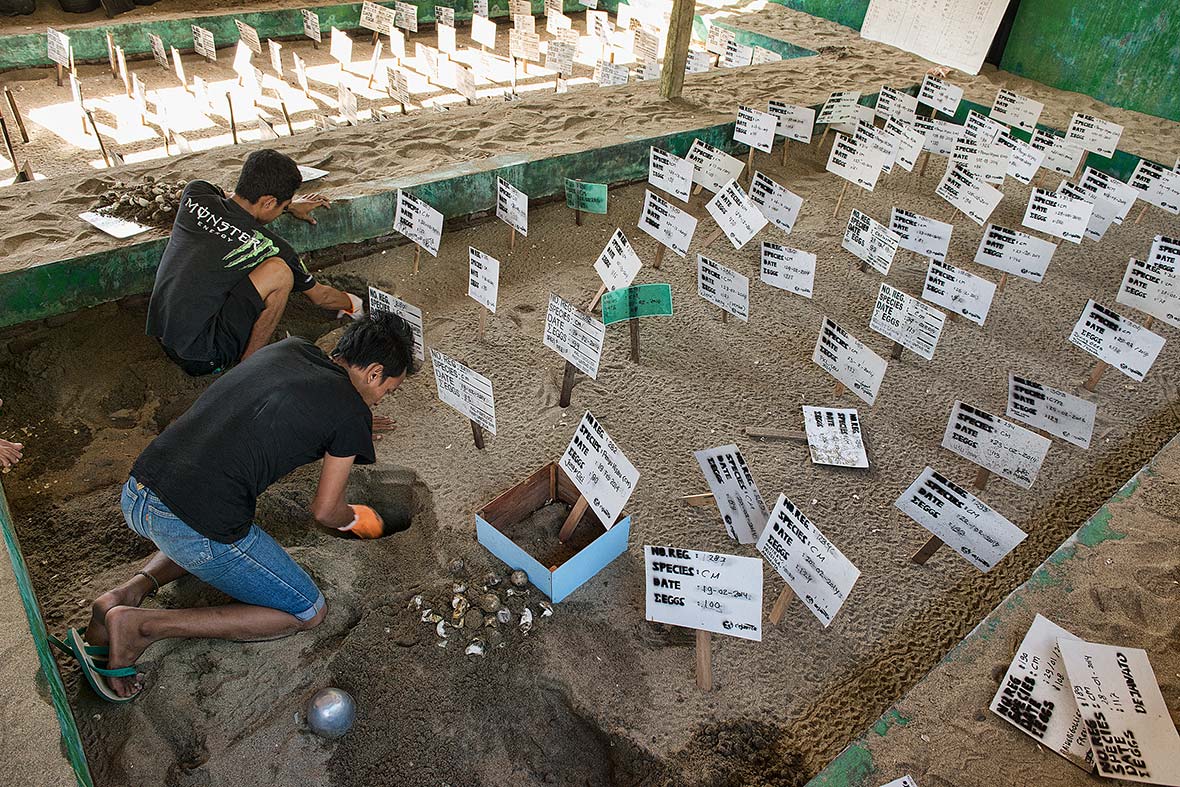
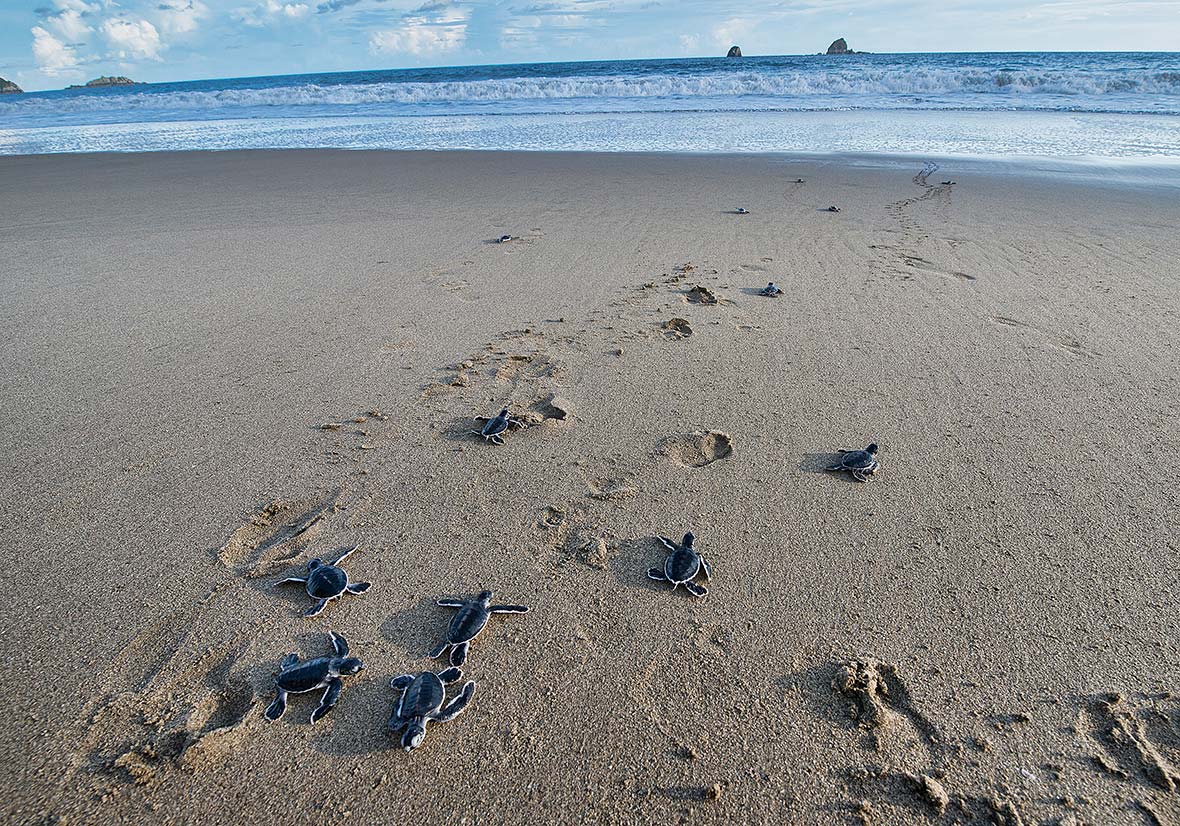
We headed out to the beach at dark, carefully following in our guide’s footsteps on the soft sand. He said conditions were good in that there was a high tide, which allows the turtles to easily make their way to the back of the beach, which is a safer spot for giving birth.
A loud rustling came from nearby, startling us, and we soon were marveling at a huge green sea turtle, frantically digging a massive hole with her hind flippers in which to lay her eggs. Our guide gently shined a small light near the turtle, but it seemed oblivious, as it was so busy concentrating on preparing to give birth.
After an eternity, punctuated by grunts, rotations, and more digging, the giant turtle finally completed her business and waddled away from a nest full of eggs. Our ranger and his team moved quickly to secure the eggs, and the following morning we saw how the fruits of their labor ended up, seeing hundreds of baby turtles in various stages of incubation in the busy hatchery.


While the birthing spectacle had been exciting, the entire experience at Sukamade felt far more like a visit to a living biology experiment than a tourist attraction. The locals working here were just committed to aiding the safety of endangered species, and visitors rightly played second fiddle.
All journeys have their signature moment. And ours came the following morning when we rose at dawn to follow a group of volunteers out to the now ebbing tide. Each volunteer was given a plastic bucket full of baby turtles, deemed ready enough to start their voyage into the open sea.
A few volunteers scanned the skies for the closest-to-right moment when there appeared to be a lack of gulls or other birds overhead, we were all instructed to move closer to the water, and then we simultaneously dumped our buckets out, watching in rapture as the baby turtles scrambled towards the outgoing tide.
The young turtles weren’t surefooted, sometimes stumbling over one another or making a vain attempt to surge forward. But they looked like they’d been following this route forever. We marveled over this natural imprinting process.


The first 24 hours at sea are the hardest, as the hatchlings have to ride the waves and undertow out to open water, hoping not to be picked off by birds or caught up in plastic that now has unfortunately become a feature of many coastlines. Once they hit the deep blue and can dive down, their success rates start to rise.
By the time the sun started warming up Sukamade, there weren’t any traces of turtles anymore. It was almost as if we’d imagined the whole thing, some wild moonlit dream that we’d had, aided by the tortuous mountain roads we’d taken to get there.
We packed our things, got back in the jeep, and Sri lit a cigarette and fired up the engine, turning to ask how we’d like this hidden corner of Java. I smiled and recalled a quote by the Dalai Lama, “Once a year, go someplace you’ve never been before,” and realized that the roads less traveled to places like Sukamade were priceless experiences worth having again and again.
